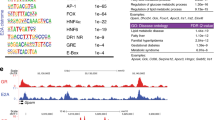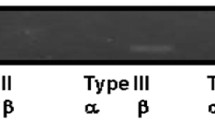Abstract
UDP-glucuronosyltransferase 1A1 (UGT1A1) plays a key role to conjugate bilirubin and prevent jaundice. There are two major elements for the induction of UGT1A1, such as PBREM (−3483/−3194), far from the promoter site, and HNF1 (−75/−63), near to the promoter site. In a previous report, we showed that the proximal HNF1 site is essential for the induction of UGT1A1 by glucocorticoid receptor (GR). In this report, we investigated the influence of PBREM on the induction of the UGT1A1 reporter gene by GR and PXR with dexamethasone (DEX). We confirmed that GR was transferred from cytosol into the nucleus in 15–30 min by DEX stimulation, but HNF1 was not. We constructed a reporter gene containing PBREM to compare the induction of the reporter gene without PBREM by DEX-GR. The results show that induction of the reporter gene with PBREM by DEX at 100 μM is the same level as the induction of the reporter gene without PBREM, although PBREM contains GRE. Co-transfection of hGR with the reporter gene did not show any influence of the induction of the reporter gene between the vector with and without PBREM. Meanwhile, by co-transfection of hPXR, the induction of the reporter gene with PBREM was significantly more than the induction of the reporter gene without PBREM at 100 μM DEX. This supports that hPXR induced UGT1A1 through PBREM by DEX. These results showed that PBREM has no relation with the induction by DEX-GR but the proximal site of UGT1A1 may function in stimulation by DEX-GR.




Similar content being viewed by others
Abbreviations
- UGT:
-
UDP-glucuronosyltransferase
- PBREM:
-
Phenobarbital responsive enhancer module
- GR:
-
Glucocorticoid receptor
- HNF:
-
Hepatocyte nuclear factor
- DEX:
-
Dexamethasone
- PXR:
-
Pregnane-X receptor
- NE:
-
Nuclear extract
References
Evans WE, Relling MV (1999) Science Pharmacogenomics: Translating functional genomics into rational therapeutics. Science 286:487–491
King C, Finley B, Franklin R (2000) The glucuronidation of morphine by dog liver microsome; identification of morphine-6-O-glucuronide. Drug Metab Dispos 28:661–663
Radominska-Pandya A, Czernik PJ, Little JM, Battaglia E, Mackenzie PI (1999) Structural and functional studies of UDP-glucuronosyltransferases. Drug Metab Rev 31:817–899
Fisher MB, Paine MF, Strelevitz TJ, Wrighton SA (2001) The role of hepatic and extrahepatic UDP-glucuronosyltransferase in human drug metabolism. Drug Met Rev 33:273–297
Vanstapel F, Blanckaert N (1988) Topology and regulation of bilirubin UDP-glucuronosyltransferase in sealed native microsomes from rat liver. Arch Biochem Biophys. 263:216–225
Yokota H, Yuasa A, Sato R (1992) Topological disposition of UDP-glucuronosyltransferase in rat liver microsomes. J Biochem 112:192–196
Fevery J, van der Vijver M, Michiels R, Heierwegh KPM (1977) Comparison in different species of biliary bilirubin-Ixa conjugates with the activities of hepatic and renal bilirubin Ixa-uridinediphosphate glycosyltransferase. Biochem J 164:737–746
Tukey RH, Strassburg CP (2001) Genetic multiplicity of the human UDP-glucuronosyltransferases and regulation in the gastrointestinal tract. Mol Pharmcol 59:405–414
Peters WHM, Jansen PLM, Nauta HM (1984) The molecular weight of UDP-glucuronosyltransferase determined with radiation-inactivation analysis; A molecular model of bilirubin UDP-glucuronosyltransferase. J Biol Chem 259:11791–11805
Sato H, Koiwai O, Tanabe K, Kashiwamata S (1990) Isolation and sequencing of rat liver bilirubin UDP-glucuronosyltransferase cDNA: possible alternate splicing of a common primary transcript. Biochem Biophys Res Commun 169:260–264
Oguri K (2000) An active metabolite of morphine and the responsible glucuronosyltransferase for its formation. Xenobio Metab Dispos 15:136–142
Gong QH, Cho JW, Huang T, Potter C, Gholami N, Basu NK, Kubota S, Carvalho S, Pennington MW, Owens IS, Popescu NC (2001) Thirteen UDP-glucuronosyltransferase genes are encoded at the human UGT1 gene complex locus. Pharmacogenetics 11:357–368
Ueyama H, Koiwai O, Soeda Y, Sato H, Satoh Y, Ohkubo I, Doida Y (1997) Analysis of the promoter of human bilirubin UDP-glucuronosyltransferase gene (UGT1*1) in relevance to Gilbert’s syndrome. Hepatology Res 9:152–163
Sugatani J, Kojima H, Ueda A, Kakizaki S, Yoshinari K, Gong QH, Owens IS, Negishi M, Sueyoshi T (2001) The phenobarbital response enhancer module in the human bilirubin UDP-glucuronosyltransferase UGT1A1 gene and regulation by the nuclear receptor CAR. Hepatology 33:1232–1238
Sugatani J, Nishitani S, Yamakawa K, Yoshitani K, Sueyoshi T, Negishi M, Miwa M., (2005) Transcriptional regulation of human UGT1A1 gene expression. Mol Pharmacol 67:845–855
Honkakoski P, Moore R, Washburn KA, Negishi M (1998) Activation by diverse xenochemicals of the 51-base pair phenobarbital-responsive enhancer module in the CYP2B10 gene. Mol Pharmacol 53:597–601
Sueyoshi T, Kawamoto T, Zelko I, Honkakoski P, Negishi M (1999) The repressed nuclear receptor CAR responds to phenobarbital in activating the human CYP2B6 gene. J Biol Chem 274:6043–6046
Yueh MF, Huang YH, Chen S, Nguyen N, Tukey RH (2003) Involvement of the xenobiotic response element (XRE) in Ah-receptor mediated induction of human UDP-glucuronosyltransferase 1A1. J Biol Chem 278:15001–15006
Xie W, Yeuh MF, Radominska-Pandya A, Saini SP, Negishi M, Bottroff BS, Cabrera GY, Tukey RH, Evans RM (2003) Control of steroid, heme, and carcinogen metabolism by nuclear pregnane X receptor and constitutive androstane receptor. Proc Natl Acad Sci USA 100:4150–4155
Huss JM, Kasper CB (2000) Two-stage glucocorticoid induction of CYP3A23 through both the glucocorticoid and pregnane X receptors. Mol Pharmacol 58:48–57
Bock KW, Gschaidmeir H, Heel H, Lehmkoster T, Munzel PA, Bock-Hennig BS (1999) Functions and transcriptional regulation of PAH-inducible human UDP-glucuronosyltransferases. Drug Met Reviews 31:411- 422
Auyeung DJ, Kessler FK, Ritter JK (2003) Mechanism of rat UDP-glucuronosyltransferase 1A6 induction by Oltipraz: Evidence for a contribution of the aryl hydrocarbon receptor pathway. Mol Pharmacol 63:119–127
Huang W, Zhang J, Chua SS, Qayanani M, Han Y, Granata R, Moore DD (2003) Induction of bilirubin clearance by the constitutive androstane receptor (CAR). Proc Natl Acad Sci USA 100:4156–4161
Bosma PJ, Chowdhury JR, Bakker C (1995) The genetic basis of the reduced expression of bilirubin UDP-glucuronosyltransferase 1 in Gilbert’s syndrome. New England J Med 333:1171–1175
Monaghan G, Ryan M, Seddon R, Hume R, Burchell B (1996) Genetic variation in bilirubin UDP-glucuronosyltransferase gene promoter and Gilbert’s syndrome. Lancet 347:578–581
Sato H, Adachi Y, Koiwai O (1996) The genetic basis of Gilbert’s syndrome. Lancet 347:557–558
Koiwai O, Aono S, Adachi Y, Kamisaka T, Yasui Y, Nishizawa M, Sato H (1996) Gilbert’s syndrome is caused by a heterozygous missense mutation in the gene for bilirubin UDP-glucuronosyltransferase. Hum Mol Genet 5:645–647
Usui T, Kuno T, Ueyama H, Ohkubo I, Mizutani T (2006) Proximal HNF1 element is essential for the induction of human UDP-glucuronosyltransferase 1A1 by glucocorticoid receptor. Biochem Pharmacol 71:693–701
Usui T, Kuno T, Mizutani T, (2006) Induction of human UDP-glucuronosyltransferase 1A1 by cortisol-GR. Molecular Biology Reports 33:91–96
Kumar V, Green S, Stack G, Berry M, Jin JR, Chambon P (1987) Functional domains of the human estrogen receptor. Cell 51:941–951
Lehmann JM, McKee DD, Watson MA, Willson TM, Moore JT, Kliewer SA (1998) The human orphan nuclear receptor PXR is activated by compounds that regulate CYP3A4 gene expression and cause drug interaction. J Clin Invest 102:1016–1023
Kurata H, Kamoshita K, Kawai E, Sukenaga Y, Mizutani T, (1992) The 5′ untranslated region of human cellular glutathione peroxidase gene is indispensable for its expression in COS-7 cells. FEBS Lett 312:10–14
Kanou M, Saeki K, Kato T, Takahashi K, Mizutani T, (2002) Study of in vitro glucuronidation of hydroxyquinolines with bovine liver microsomes. Fund Clin Pharmcol 16:513–517
Yamamura N, Imura-Miyoshi K, Naganuma H, (2000) Proximal HNF1 element in the promoter region of human UGT1A1 is essential for the induction by GR. Drug Metabolism Disposition 28:1484–1486
Kanou M, Usui T, Ueyama H, Sato H. Ohkubo I, Mizutani T (2004) Stimulation of transcriptional expression of human UDP-glucuronosyltransferase 1A1 by dexamethasone. Molecular Biol Reports 31:151–158
Gibson GG, Plant NJ, Swales KE, Ayrton A, El-Sankary W, (2002) Receptor-dependent transcriptional activation of cytochrome P450 3A genes: induction mechanisms, species differences and interindividual variation in man. Xenobiotica 32:165–206
Wang H, Faucette S, Sueyoshi T, Moore R, Ferguson S, Negishi M, LeCluyse EL (2003) A novel distal enhancer regulated by pregnane X receptor/constitutive androstane receptor is essential for the maximum induction of CYP2B6 gene expression. J Biol Chem 278:14146–14152
Faust DM, Catherin AM, Barbaux S, Belkadi L, Imaizumi-Scherrer T, Weiss MC (1996) The activity of the highly inducible mouse phenylalanine hydroxylase gene promoter is dependent upon a tissue-specific, hormone-inducible enhancer. Mol. Cell Biol 16:3125–3137
Suh DS, Rechier MM (1997) Hepatocyte nuclear factor 1 and the glucocorticoid receptor synergistically activate transcription of the insulin-like growth factor binding protein-1 gene. Mol Endocrinol 11:1822–1831
Bernard P, Goudonnet H, Artur Y, Desvergne B, Wahli W (1999) Activation of the mouse TATA-less and human TATA-containing UDP-glucuronosyltransferase 1A1 promoters by hepatocyte nuclear factor 1. Mol Pharmacol 56:526–536
Pontoglio M, Barra J, Hadchouel M, Doyen A, Kress C, Bach JP, Babinet C, Yaniv M (1996) Hepatocyte nuclear factor 1 inactivation results in hepatic dysfunction, phenylketonuria, and renal Fanconi syndrome. Cell 84:575–585
Acknowledgements
We thank Dr. Hisao Ueyama of Shiga University of Medical Science for the gift of some invaluable reporter plasmids of UGT1A1. We also thank Dr. Pierre Chambon of IGBMC, France for the gift of the pSG5-hGR vector and Dr. Steven A Kliewer of Dallas Southwestern Medical Center, USA for the gift of the pSG5-hPXR vector.
Author information
Authors and Affiliations
Corresponding author
Rights and permissions
About this article
Cite this article
Kuno, T., Togawa, H. & Mizutani, T. Induction of human UGT1A1 by a complex of dexamethasone-GR dependent on proximal site and independent of PBREM. Mol Biol Rep 35, 361–367 (2008). https://doi.org/10.1007/s11033-007-9094-2
Received:
Accepted:
Published:
Issue Date:
DOI: https://doi.org/10.1007/s11033-007-9094-2




